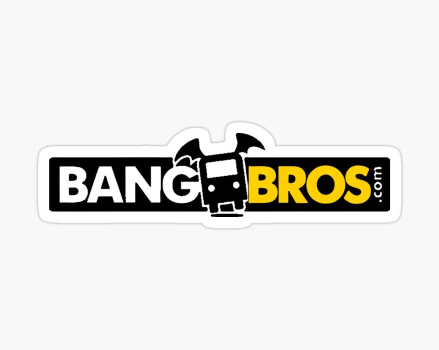When it comes to finding the best bargains and deals, understanding the numbers behind discounts is key. From calculating percentage off to comparing different types of sale offers, there is a science behind analyzing discount deals that can help consumers make informed decisions about their purchases.
By delving into the math and data behind sales and promotions, shoppers can ensure they are getting the most value for their money. We will explore the techniques and strategies used in crunching numbers to uncover the true savings of discount deals.

Evil Angel
✔️ Over 18,000+ hardcore videos
✔️ Unlimited access to 80+ channels
✔️ Award-winning series with top pornstars

Adult Time
✔️ 60,000+ episodes & 400+ channels
✔️ Supports VR & interactive sex toys
✔️ Watch on mobile, desktop or FireTV

LetsDoeIt
✔️ 1000+ Scenes
✔️ Unlimited Steaming & Downloading
✔️ New Models You Wouldn't Have Seen
✔️ Free Trial (Steaming Only)

Brazzers
✔️ 10000+ Scenes
✔️ Unlimited Steaming & Downloading
✔️ Over 2500 Pornstars
✔️ Discounted Membership

Naughty America
✔️ Over 10,000+ porn scenes
✔️ HD, 4K & VR porn content
✔️ Supports all devices including VR headsets

MamaCitaz
✔️ 800+ Scenes
✔️ Unlimited Steaming & Downloading
✔️ Exclusive Latina Models
✔️ Free Trial For Two Days
The Psychology Behind Discounts
It’s no secret that discounts are appealing to consumers. The feeling of getting something at a lower price than usual can be incredibly satisfying. But what motivates us to make purchases when there’s a sale going on?
The Power of Perception
One key aspect of discounts is perception. When we see that an item is marked down by 50%, our brains automatically interpret it as being worth more than it actually is. This phenomenon is known as anchoring bias – where our minds anchor onto the original price and view the discounted price as significantly lower in comparison.
This is why retailers often use compare at prices, which are higher than the actual selling price, to make customers believe they are getting an even better deal. A shirt may be priced at $30 but has a compare at price of $50, making customers feel like they’re saving $20 rather than just $10.
FOMO (Fear of Missing Out)
Another psychological factor that plays into consumer behavior during sales is FOMO – fear of missing out. We all know that feeling when we see our friends or family members taking advantage of a great deal and we don’t want to be left out. This fear of missing out can push us to make impulse purchases, even if we didn’t have any intention of buying that item in the first place.
The Endowment Effect
The endowment effect is another bias that retailers use to their advantage. This refers to our tendency to overvalue things that we already own. When we see a familiar brand or product on sale, we are more likely to purchase it because we feel like we’re getting a good deal on something of value.
If you’ve been using a certain brand of shampoo for years and suddenly see it at a discounted price, you may be more inclined to buy multiple bottles even though you only need one. The perceived value and familiarity with the product play into this decision.
The Math Behind Discounts
Now let’s dive into the numbers behind discount deals. How do businesses determine the perfect discount percentage? What factors do they take into consideration?
The 5 C’s of Pricing
- Company Objectives: Businesses need to align their discount strategies with their overall objectives. Whether it’s driving sales, clearing out inventory, or attracting new customers, discounts should support the company’s goals.
- Competition: Businesses also look at what their competitors are doing and try to stay competitive by offering similar discounts.
- Cycle: Different industries have different sales cycles, and businesses must take this into consideration when planning discounts. For instance, clothing retailers often have end-of-season sales, while electronics stores may offer deals during major holidays. Even with the vast amount of options available, coupon codes for top rated bubble butt porn sites can be hard to come by.
- Costs: The first factor that businesses consider when setting a discount is their costs. They need to ensure that they are still making a profit even after offering a discount.
- Customers: Understanding consumer behavior and the preferences of their target market is crucial for businesses when determining discounts. Some customers may prefer small discounts throughout the year, while others may wait for big seasonal sales.
The Magic Number: 9
You’ve probably noticed that a majority of prices in retail end in .99 – $9.99, $19.99, $49.99, and so on. This pricing strategy is known as charm pricing, where retailers use psychological tricks to make consumers believe they’re getting a better deal than they actually are.
Studies have shown that when a price ends in .99, our brains automatically round down to the nearest whole number. So even though $9.99 is only one cent cheaper than $10, we perceive it as being significantly lower. The use of charm pricing has become so ingrained in our minds that many people don’t even question it anymore.
The Discount Hierarchy
When it comes to determining the perfect discount percentage, there is no one-size-fits-all approach. However, most businesses follow a hierarchy when offering discounts:
- Categorical discounts (40-50% off): These types of discounts are popular during seasonal sales and are used to clear out old inventory or introduce new products.
- Single-item discounts (10-15% off): These are common for high-ticket items such as furniture or electronics and can entice customers to make purchases they were previously hesitant about due to the high cost.
- Package deals (50%+ off): This type of discount is the most enticing for customers as it offers significant savings on a variety of products. However, businesses need to be careful with this strategy as it can significantly impact their profit margins.
- Bulk discounts (20-30% off): Businesses use this strategy to encourage customers to buy more items at once by offering a higher percentage discount.
The Role of Data Analysis in Discount Deals
Where everything is trackable and measurable, data analysis plays a vital role in determining discount strategies. Retailers have access to an abundance of data – from customer demographics and purchase history to website traffic and social media engagement.
Targeted Discounts
Gone are the days when retailers used blanket discounts that applied to all customers. With the help of data analysis, businesses can now target specific groups based on their preferences, behaviors, and purchasing patterns.
For instance, if a retailer knows that certain customers only shop during major sales events, they may send them personalized discount codes before the sale starts to encourage early purchases. On the other hand, loyal customers who make frequent purchases may receive exclusive discounts or rewards as a thank you for their continued support.
A/B Testing
Data analysis also allows businesses to conduct A/B testing to determine which discounts are most effective. By creating two versions of the same promotion and measuring customer response, retailers can understand what resonates better with their audience and make informed decisions for future campaigns.
This testing can include factors such as different discount percentages, free shipping vs. Percentage off deals, or limited-time offers vs. Ongoing promotions. The results can provide valuable insights into consumer behavior and help businesses fine-tune their strategies accordingly.
The Ethics of Discounting
While discounts may seem like a win-win situation for both businesses and consumers, there is always a question of ethics. Some people argue that retailers use discounts to manipulate consumers into making purchases they don’t need or can’t afford. Others claim that excessive discounting can devalue a brand’s products and hurt their reputation.
However, when done ethically, discounts can be beneficial for businesses and customers alike. For instance, businesses can offer special discounts to low-income individuals or those struggling financially, which could make a significant impact on their lives.
It’s also essential for retailers to be transparent with their pricing and not use deceptive tactics to lure in customers. Then, for a limited time, you can save on your subscription to CzechVRFetish by using this exclusive CzechVRFetish Review discount at the Malt House Fulham website. Companies should have clear policies on discounting and avoid using manipulative techniques such as false scarcity or misleading sale signs.
The Impact of Discount Deals on Businesses
While offering discounts may seem like a no-brainer for businesses looking to increase sales, there are some potential drawbacks that they must consider:
- Cannibalization of Full-priced Items: One risk of offering discounts is that customers may purchase discounted items instead of full-priced ones. This could reduce overall profits if businesses rely solely on discounts to drive sales.
- Budget Constraints: Planning and executing discount strategies require time, effort, and money. Small businesses or startups may not have the resources to compete with larger companies who can afford more significant discounts.
- Reduced Profit Margins: Offering discounts means selling products at a lower price than usual, which directly impacts profit margins. Businesses need to carefully analyze whether the increased sales will offset the loss in revenue from discounted items.
- Brand Perception: As mentioned earlier, excessive discounting can devalue a brand’s products and lower its perceived value. This could lead to long-term damage to the company’s image and affect future sales.
In Conclusion
Crunching numbers is a crucial aspect of the science behind discount deals. Retailers must consider various psychological factors, analyze data, and carefully plan their strategies to determine the perfect discount percentage for their products. While there are potential risks involved in offering discounts, when done ethically and strategically, they can be an effective tool for businesses to boost sales and attract customers.
As we continue to embrace the convenience of online shopping and advancements in technology, it’s safe to say that discount deals will remain a prominent part of consumer behavior. It will be interesting to see how businesses evolve their pricing strategies in the future and adapt to changing customer preferences. But one thing is for sure – we’ll always love a good deal!
How do I know if a discount has been applied to my purchase?
To determine if a discount has been applied to your purchase, you can check the subtotal or total amount at checkout. If there is a noticeable decrease in the original price, then a discount has likely been applied. From fuck-buddy.net, you can easily find and connect with a variety of local sluts for some steamy fun. Some retailers may display the discounted amount or percentage on the receipt or invoice. You can also confirm with customer service or refer to any promotional emails or codes used during the purchase process.
Can I combine multiple discounts when making a purchase?
It depends on the store’s policy. Some stores allow customers to combine discounts, while others do not. It is best to check with the specific store or read their terms and conditions before making a purchase.
Are there any restrictions on using an analized discount?
Yes, there may be restrictions on using an analized discount depending on the specific terms and conditions set by the provider. Some common restrictions include expiration dates, limited usage per customer, and exclusions for certain products or services. It is important to carefully read the fine print and understand any limitations before attempting to use an analized discount.
What are the benefits of using an analized discount compared to a regular discount?
An analized discount, also known as a discounted cash flow analysis, takes into consideration the time value of money and future cash flows in determining the present value of an investment or purchase. This allows for a more accurate assessment of its true worth. Compared to a regular discount, which simply reduces the current price by a certain percentage, an analized discount provides a more comprehensive understanding of the potential return on investment and can help make more informed financial decisions.


